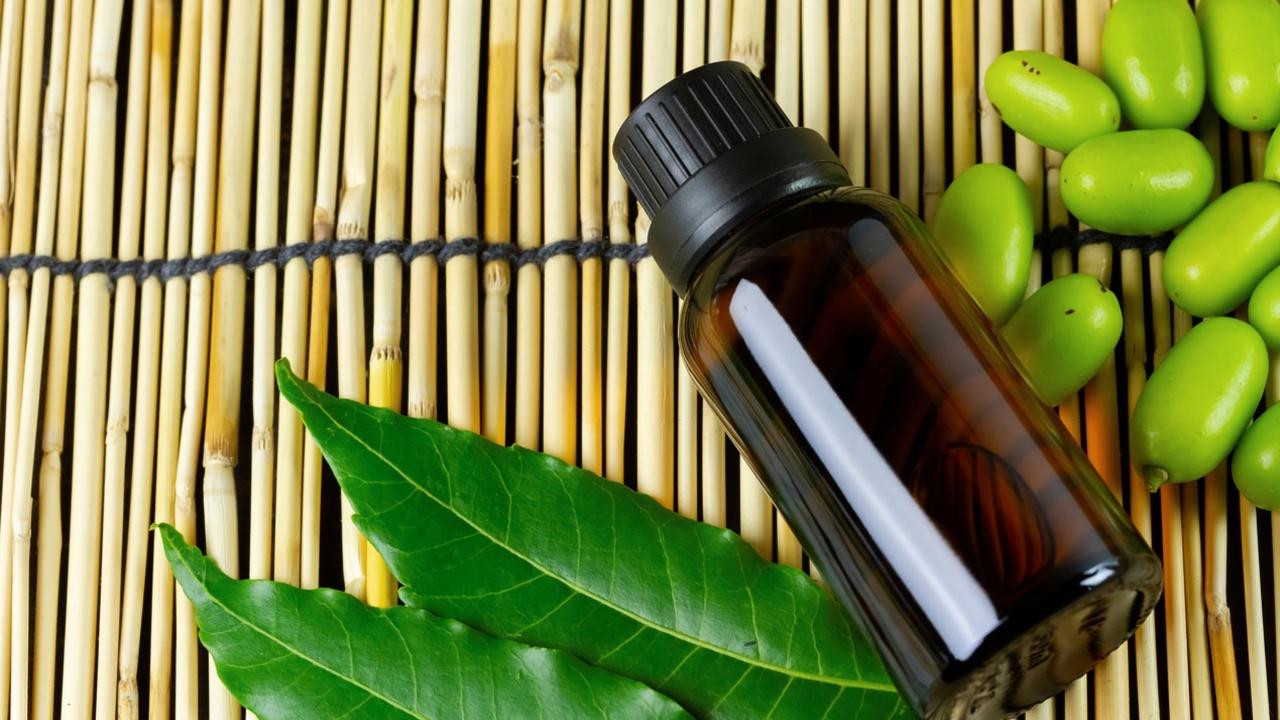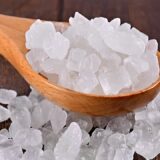Top 10 Medicinal Uses of Neem Tree, Leaves, Oil in Ayurveda
Azadirachta indica, commonly known as neem or margosa, is a revered tree with a rich history in traditional Indian medicine. Its significance is deeply rooted in Ayurveda, Unani, and homeopathic practices, dating back centuries. In Sanskrit, “nimba” signifies good health, a testament to the tree’s medicinal properties.
This ancient wisdom has bestowed upon neem the epithet “Sarvaroga nivarini,” meaning “cure for all ailments,” and “Arishtha,” or “reliever of sickness” in Ayurveda. India’s rural communities have long considered neem the “village pharmacy” or “divine tree” due to its extensive medicinal applications.
With over 80% of the population in developing nations relying on medicinal plants for healthcare, neem’s importance is magnified. Every part of the neem tree—roots, seeds, flowers, bark, leaves, and fruit pulp—possesses therapeutic properties.
Its integration into Ayurvedic and Unani medicine has made it a focal point of modern medical research, exemplifying the potential of phytotherapy, or plant-based medicine.
Neem: A Chemical and Medicinal Properties
Neem contains over 150 compounds.
These compounds are primarily classified as:
Isoprenoids:
- Diterpenoids
- Triterpenoids (limonoids, azadirone, nimbin)
Non-isoprenoids:
- Flavonoids
- Tannins
- Proteins
- Nimbidin is a key compound found in neem seed oil.
- Nimbidin and other tetranortriterpenes from neem have various biological activities.
Neem extracts exhibit a wide range of pharmacological properties, including:
- Anti-inflammatory
- Anti-arthritic
- Antipyretic
- Hypoglycemic
- Antigastric ulcer
- Spermicidal
- Antifungal
- Antibacterial
- Diuretic
- Antimalarial
- Antitumor
- Immunomodulatory
Neem Leaf Nutritional Resource
Neem leaf meal has emerged as a subject of interest due to the global search for alternative food and feed sources. While rich in crude protein (18.10%) and containing a substantial amount of crude fiber (15-56%), its nutritional profile presents a complex picture.
Key Nutritional Aspects of Neem Leaf:
- High Protein Content: Offers a potential protein source for both humans and animals.
- Fiber Rich: This can contribute to dietary fiber intake, aiding digestion.
- Energetic Considerations: Despite high gross energy content, metabolizable energy is lower, suggesting potential limitations for energy provision.
- Mineral and Vitamin Potential: Neem leaf meal is believed to be a source of essential vitamins and minerals, though specific data might be limited.
Neem’s Properties in Ayurveda
Properties of neem:
Rasa (Taste)
- Bitter (tikta): Known for its cleansing and purifying properties.
- Astringent (kashaya): Helps to dry up tissues and promotes healing.
Guna (Qualities)
- Light to digest (Laghu): Easy on the digestive system.
- Dry (rooksha): Has a drying effect on the body.
Vipaka (Post-digestive effect)
- Pungent (katu): Indicates a stimulating effect after digestion.
Veerya (Potency)
- Cold in nature: Has a cooling effect on the body.
These properties collectively contribute to Neem’s medicinal actions. For instance, its bitter and astringent taste, combined with its drying and cooling nature, make it effective in treating conditions related to excess heat and moisture in the body.
4 Varieties of neem
In addition to the well-known neem (Azadirachta indica), several other plant species are sometimes referred to as “neem” in various contexts. Here’s a summary of these different varieties:
1. Nimba (Azadirachta indica): Commonly known as neem or Indian lilac, this is the most widely recognized and used species. It is renowned for its extensive medicinal properties and uses in Ayurveda.
2. Mahanimba (Melia azadirachta): Also known as the Chinese neem or Persian lilac, this species is closely related to Azadirachta indica but is primarily found in tropical and subtropical regions outside India. It shares some similar properties with neem but is less commonly used in traditional medicine.
3. Parvata Nimba (Ailanthus excelsa): Known as the large-leaved neem tree, this species is used in traditional medicine in some regions. It has a different set of properties and uses compared to Azadirachta indica.
4. Akasa Nimba (Malingtonia horensis): This species is less well-known and used, but it is part of the broader neem family. It is found in specific regions and may have unique medicinal applications.
Each of these varieties has its own distinct characteristics and potential applications in traditional medicine, though Azadirachta indica remains the most prominent and widely utilized for its therapeutic benefits.
Top 10 Medicinal Uses of Neem in Ayurveda
Neem (Azadirachta indica) is highly esteemed in Ayurveda for its diverse medicinal properties. Here are the top 10 medicinal uses of neem in Ayurvedic practice:
1. Anti-Inflammatory: Neem is known for its powerful anti-inflammatory properties, making it effective in treating inflammatory conditions such as arthritis and skin disorders like eczema and psoriasis.
2. Antimicrobial: Neem exhibits strong antimicrobial activity, helping to combat bacterial, viral, and fungal infections. It is commonly used for treating skin infections, wounds, and oral health issues.
3. Digestive Health: Neem aids in digestion by enhancing the digestive fire (Agni), relieving indigestion, and managing gastrointestinal disorders. It also helps in treating intestinal worms and parasites.
4. Blood Purification: Neem acts as a natural blood purifier, detoxifying the bloodstream and promoting clearer skin by reducing toxins and impurities.
5. Diabetes Management: Neem helps in regulating blood sugar levels, making it beneficial for managing diabetes. It enhances insulin sensitivity and supports overall metabolic health.
6. Skin Care: Neem is widely used in skincare for its ability to treat acne, reduce oiliness, and improve skin tone. It is used in various forms such as neem oil, neem powder, and neem leaf extracts.
7. Respiratory Health: Neem is effective in treating respiratory conditions such as asthma, bronchitis, and coughs. Its anti-inflammatory and antimicrobial properties help clear respiratory passages and reduce symptoms.
8. Fever Reduction: Neem has antipyretic (fever-reducing) properties, making it useful in managing fevers and associated symptoms like excessive thirst and fatigue.
9 . Oral Health: Neem is beneficial for oral hygiene. It helps combat dental issues like cavities, plaque, and gingivitis due to its strong antimicrobial properties. Neem twigs and neem oil are commonly used in traditional oral care.
10. Immune System Support: Neem boosts the immune system by enhancing the body’s ability to fight infections and diseases. Its immune-modulating effects help maintain overall health and resilience.
Neem’s extensive range of applications makes it a cornerstone of Ayurvedic medicine, valued for its therapeutic benefits across multiple health concerns.
Uses of Neem Plant in Ayurveda
Neem (Azadirachta indica) is a prominent herb in Ayurveda, renowned for its extensive range of health benefits. Here’s a more detailed exploration of its properties and applications:
1. Sheeta (Cooling): Neem’s cooling effect helps to soothe and reduce internal heat, making it beneficial for conditions associated with excessive warmth or inflammation.
2. Laghu (Light): Its light nature aids in smooth digestion and quick absorption, making it effective in promoting overall digestive health.
3. Grahi (Absorbent): Neem’s ability to absorb moisture is valuable in managing conditions like diarrhea and in drying and cleansing wounds and ulcers, enhancing their healing process.
4. Katu (Pungent): The pungent taste of neem stimulates appetite and digestion. After digestion, neem maintains a pungent quality, which helps in balancing digestive fire.
5. Tikta (Bitter): The bitterness of neem contributes to its detoxifying and cleansing properties, promoting liver health and helping in the elimination of toxins.
6. Agnikrut (Digestive): Neem enhances digestive capacity, making it beneficial for improving overall digestive function and addressing issues like indigestion.
7. Vatakrut (Increases Vata): Neem may increase Vata dosha, which can lead to dryness or imbalances if not countered with balancing foods or herbs.
8. Ahrudya (Heart): While neem has many benefits, it is considered less favorable for heart health due to its potential to increase Vata, which may affect the heart’s function.
9. Shramahara (Relieves Tiredness): Neem helps alleviate fatigue and promotes energy levels, making it useful for overcoming exhaustion and restoring vitality.
10. Truthara (Relieves Thirst): By reducing Pitta dosha, neem is effective in controlling excessive thirst and is beneficial in treating fever and related symptoms.
11. Kasahara (Cough Relief): Neem’s antimicrobial and anti-inflammatory properties help to relieve coughs and manage respiratory infections, making it a valuable remedy for respiratory health.
12. Jwarahara (Fever Relief): Neem’s potent antimicrobial compounds make it effective in managing fever by addressing its underlying infections and imbalances.
13. Aruchihara (Relieves Anorexia): Despite its bitter taste, neem is known for stimulating appetite and addressing anorexia by promoting healthy eating habits.
14. Krumihara (Worms): Neem is effective in combating intestinal worms and microbial infections, making it a key component in managing parasitic infestations and infected wounds.
15. Vranahara (Wound Healing): Neem supports the cleansing and accelerated healing of wounds by promoting tissue regeneration and preventing infection.
16. Pitta-Kaphahara (Balances Pitta and Kapha): Although neem has a cooling effect, its pungent properties help balance both Pitta and Kapha doshas, addressing issues related to excessive cold or moisture.
17. Chardi-Hrillasa Hara (Relieves Nausea and Vomiting): Neem is beneficial for managing nausea and vomiting, providing relief from gastrointestinal discomfort.
18. Kushtahara (Skin Diseases): Neem is widely used for its effectiveness in treating various skin conditions, including acne, eczema, and psoriasis, due to its anti-inflammatory and antimicrobial properties.
19. Mehanut (Diabetes and Urinary Tract Disorders): Neem aids in managing diabetes by helping regulate blood sugar levels and is beneficial for addressing urinary tract disorders due to its diuretic and antiseptic effects.
Neem’s comprehensive range of benefits makes it a versatile and valuable herb in Ayurvedic medicine, supporting everything from digestive health to skincare and beyond.
Uses of Neem Leaves in Ayurveda
Neem leaves, while sharing many of the general properties of neem, also have specific benefits outlined in Ayurveda. Here’s a detailed look at their unique advantages:
1. Netrya (Eye Health): Neem leaves are beneficial for the eyes, helping to alleviate infections and support overall eye health.
2. Kruminut (Worms and Microbes): The leaves are effective in combating intestinal worms and microbial infections, contributing to gastrointestinal health.
3. Pittanut (Balances Pitta): Neem leaves help to balance Pitta dosha, which can be beneficial in managing conditions associated with excess heat or inflammation.
4. Vishanut (Natural Detoxifier): Neem leaves act as a natural detoxifier, helping to cleanse the body of toxins and support overall detoxification processes.
5. Vatala (Increases Vata): Neem leaves can increase Vata dosha, which may require balancing with other herbs or foods that counteract dryness or cold.
6. Katupaka (Pungent Taste Conversion After Digestion): Similar to other parts of the neem plant, neem leaves have a pungent taste that persists after digestion, which aids in balancing the digestive fire.
7. Arochaka and Kushtanut (Skin Diseases and Anorexia): Neem leaves help relieve various skin diseases due to their anti-inflammatory and antimicrobial properties. They also aid in addressing anorexia by stimulating appetite and improving overall digestion.
Neem leaves, with their specific properties, enhance the therapeutic uses of neem in Ayurvedic practice, particularly in promoting eye health, supporting digestion, and managing skin conditions.
Neem Fruit Benefits in Ayurveda
Neem fruit, like other parts of the neem plant, offers various health benefits in Ayurveda. Here are the specific benefits associated with neem fruit:
1.Bhedana (Aids Bowel Movement): Neem fruit helps facilitate smooth bowel movements, aiding in easier passage of stools.
2. Snidgha (Unctuous/Oily): It has an oily or unctuous quality, which can help lubricate the digestive tract and alleviate dryness.
3. Laghu (Light to Digest): Neem fruit is light and easy to digest, making it a good choice for maintaining digestive comfort.
4. Ushna (Hot in Potency): It has a warming effect on the body, which can be beneficial in balancing cold or damp conditions.
5. Gulmanut (Relieves Bloating): Neem fruit helps to reduce bloating and discomfort in the digestive system.
6. Arshanut (Relieves Piles): It is effective in managing hemorrhoids (piles), providing relief from the associated symptoms.
7. Kriminut (Relieves Worms and Infection): Neem fruit helps to combat intestinal worms and infections, supporting gastrointestinal health.
8. Mehanut (Helps in Diabetes): Neem fruit is beneficial in managing diabetes by helping to regulate blood sugar levels.
Neem fruit’s properties make it a valuable addition to Ayurvedic treatments for digestive issues, skin conditions, and metabolic health.
Other Ways to Use Neem
Neem offers a variety of additional health benefits as highlighted in Ayurvedic texts. Here’s a summary of these benefits:
1. Raktapittanut (Relieves Bleeding Disorders): Neem helps manage bleeding disorders due to its cooling properties, which can help reduce excessive bleeding and inflammation.
2. Shothahara (Reduces Inflammation): Neem is effective in treating inflammatory conditions, including those affecting the skin with symptoms such as redness and pus. It helps to reduce swelling and promote healing.
3. Respiratory Health: The twig of the neem plant is particularly beneficial for respiratory issues, such as bronchitis, cough, and cold, providing relief and supporting respiratory function.
4. Eye Health: Neem flowers are known for their benefits to eye health, helping to improve vision and alleviate various eye conditions.
5. Neem Oil: Extracted from neem fruit, neem oil is pungent, has a penetrating quality, and is hot in potency. It is effective in treating skin diseases and can also be used to relieve headaches.
These benefits illustrate neem’s versatility and its role in addressing a range of health issues from bleeding disorders and inflammation to respiratory problems and skin conditions.
Neem Oil Uses
Neem oil offers a range of benefits and uses, both internally and externally. However, it is important to use it appropriately to avoid potential side effects. Here’s a detailed overview:
Internal Use:
- Intestinal Worm Infestations: Neem oil is effective in addressing intestinal worm infestations.
- Blood Sugar Levels: Excessive oral use of neem oil can lower blood sugar levels, so diabetic patients should consult their doctor before using neem oil orally.
- Potential Side Effects: Overuse can cause nausea, vomiting, and dizziness.
- Dosha Balance: Neem oil helps balance Kapha and Pitta doshas.
External Use:
- Infectious Skin Diseases: Neem oil is beneficial for treating various infectious skin conditions due to its antimicrobial properties.
- For Face: Neem oil can improve skin glow, reduce acne, and decrease oiliness. To use, apply a few drops of neem oil onto your fingertips, gently rub it over your face, leave it on for 10 minutes, and then wash off with gram flour or soap and water.
- For Hair and Lice: Neem oil is effective in treating dandruff and killing head lice. To use, apply 1 teaspoon of neem oil to the scalp with a gentle massage, leave it on for 30 to 60 minutes, and then wash off with herbal hair wash powders or shampoo.
- Odor: Neem oil has a bitter odor when applied externally.
- Famous Brand: Patanjali neem oil is well-known in India for its quality and effectiveness.
- For Teeth: Neem oil, along with neem twigs and bark, is used as a natural toothbrush, herbal tooth powder, or paste. It is effective in fighting dental caries and plaque due to its strong antimicrobial properties.
Neem oil’s diverse applications make it a valuable addition to both skincare and dental care routines, but caution is advised regarding its internal use.
10 Interesting Facts About the Neem Tree (Azadirachta Indica):
Here are 10 interesting facts about the neem tree (Azadirachta indica) that will surprise you:
1. Native to India: The neem tree is native to the Indian subcontinent and is widely cultivated in tropical and subtropical regions around the world.
2. Versatile Uses: Almost every part of the neem tree—the leaves, bark, fruit, seeds, and oil—has medicinal, agricultural, or industrial uses.
3. Medicinal Properties: Neem is renowned in Ayurveda for its extensive medicinal properties, including anti-inflammatory, antimicrobial, and antidiabetic effects.
4. Natural Pesticide: Neem oil and neem extracts are used as natural pesticides and insect repellents in agriculture due to their ability to repel and kill pests.
5. Environmental Benefits: Neem trees are known for their ability to improve soil fertility, control soil erosion, and act as windbreaks in arid and semi-arid regions.
6. Traditional Medicine: In addition to Ayurveda, neem has been used in traditional medicine systems across various cultures for centuries to treat a range of ailments.
7. Skin Care: Neem is a common ingredient in skincare products due to its ability to treat acne, eczema, and other skin conditions, thanks to its antimicrobial and anti-inflammatory properties.
8. Dental Health: Neem twigs are traditionally used as natural toothbrushes in many cultures, and neem oil is used in oral care products to prevent dental issues like cavities and gum disease.
9. Long-Lived: Neem trees can live for up to 200 years and can grow up to 20 meters (65 feet) tall, making them a significant presence in the landscapes where they are cultivated.
10. Economic Value: The neem tree is economically valuable due to its wide range of products, including neem oil, neem powder, and neem-based formulations, which are used in medicine, agriculture, and personal care products.
General Neem Dosage Guidelines
The following dosages are for informational purposes only and should not be considered as medical advice:
- Neem Juice: 10-20 ml (approximately 2-4 teaspoons)
- Neem Paste: 10-20 grams
- Neem Decoction: 50-100 ml
- Neem Powder: 2-4 grams
- Neem Oil: 5-10 drops
Remember: These are general guidelines. The actual dosage may vary depending on the specific neem product, its concentration, and the intended use.
Frequently Asked Questions: Neem
Q: What is neem and its significance in Ayurveda?
A: Neem (Azadirachta indica) is a key Ayurvedic herb known for its anti-inflammatory, antimicrobial, and detoxifying properties. It’s used to treat various health issues, from skin conditions to digestive problems.
Q: What are neem leaves used for?
A: Neem leaves support eye health, balance Pitta dosha, detoxify the body, and treat skin diseases and digestive issues.
Q: What benefits does neem fruit offer?
A: Neem fruit aids in bowel health, relieves bloating and piles, controls parasites and helps manage diabetes.
Q: How is neem oil used and what precautions should be taken?
A: Neem oil is used for skin care, hair care, and dental health. Precautions: Avoid excessive oral use; consult a doctor if diabetic.
Q: What are the top medicinal uses of neem?
A: Neem is used for reducing inflammation, fighting infections, aiding digestion, purifying blood, managing diabetes, improving skin health, supporting respiratory health, reducing fever, enhancing oral health, and boosting immunity.
Q: Can neem be used for oral health?
A: Yes, neem is beneficial for oral health. Neem oil and neem twigs are used to combat dental issues like cavities and plaque due to their strong antimicrobial properties.
Q: What are the external uses of neem oil?
A: Externally, neem oil is used for treating skin conditions such as acne, eczema, and infections. It is also used for relieving dandruff and treating head lice.
Q: Are there any specific brands of neem oil recommended?
A: Patanjali neem oil is a well-known and widely used brand in India.
Q: What precautions should be taken when using neem products?
A: While neem products are generally safe, excessive oral use can lead to side effects like nausea and dizziness. Diabetics should consult a healthcare provider before using neem oil orally. Always do a patch test for topical applications to check for any allergic reactions.
Q: How does neem help with respiratory problems?
A: Neem helps alleviate respiratory issues such as bronchitis, coughs, and colds due to its anti-inflammatory and antimicrobial properties, which help clear respiratory passages and reduce symptoms.
Q: How can neem be used to improve skin health?
A: Neem can be used to enhance skin health by applying neem oil or neem paste to the skin to reduce acne, inflammation, and oiliness. Neem powder can also be added to face masks for additional benefits.
Q: What is the role of neem in managing diabetes?
A: Neem helps manage diabetes by improving insulin sensitivity and regulating blood sugar levels, making it a useful supplement for diabetic patients.
Q: How can neem be used in hair care?
A: Neem oil can be applied to the scalp to treat dandruff and kill head lice. A gentle massage with neem oil followed by washing with herbal shampoo is recommended.
Q: What are the benefits of neem juice?
A: Neem juice helps detoxify the body, supports liver health, and can improve skin conditions due to its blood-purifying and anti-inflammatory properties.
Q: How is neem used for detoxification?
A: Neem supports detoxification by purifying the blood, removing toxins, and enhancing liver function, which helps in overall body cleansing.
Neem! This ancient Indian herb offers natural remedies for skin, hair, and overall health. Learn about its medicinal properties and how to incorporate neem into your wellness routine.
- Therapeutics Role of Azadirachta indica (Neem) and Their Active Constituents in Diseases Prevention and Treatment(1)
- An overview of Neem (Azadirachta indica) and its potential impact on health(2)
- Neem (Azadirachta indica): A Review on Medicinal Kalpavriksha(3)
- Exploring the role of Azadirachta indica (neem) and its active compounds in the regulation of biological pathways: an update on molecular approach(4)
- Review on neem (Azadirachta indica): Thousand problems one solution(5)
- Neem(6)

























